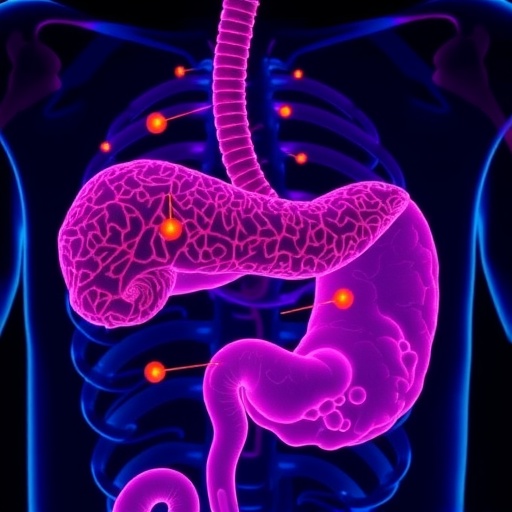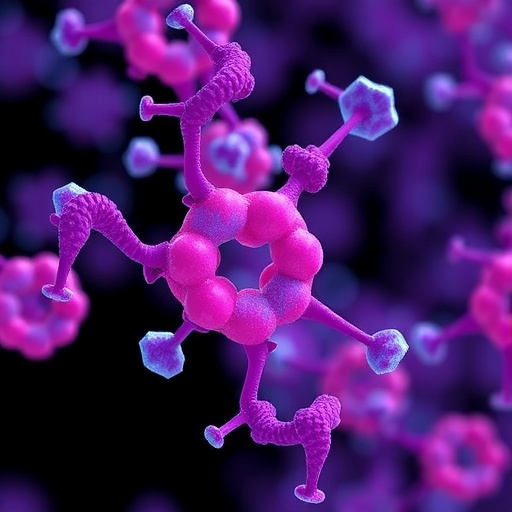In a groundbreaking development within oncology and immunology, researchers have unveiled a novel prognostic model that leverages inflammation-based biomarkers to predict the outcomes of patients suffering from hepatocellular carcinoma (HCC) who undergo radical hepatectomy. This innovative approach combines the C-reactive protein to albumin ratio (CAR) with the Systemic Inflammatory Response Index (SIRI), two critical indicators of the body’s inflammatory and immune status, to create a robust predictive tool that enhances current clinical strategies.
Hepatocellular carcinoma, a primary malignancy of the liver, stands as one of the deadliest cancers worldwide, with survival rates heavily dependent on early detection and effective treatment. Surgical intervention, specifically radical hepatectomy, remains a cornerstone treatment for eligible patients. However, the heterogeneity of tumor behavior and individual patient responses has perpetuated challenges in accurately forecasting survival outcomes. This uncertainty underscores the necessity for refined prognostic systems that integrate biological markers reflective of tumor-host interactions.
The research, conducted on a significant cohort of 920 patients, marks one of the most extensive to date investigating systemic inflammation’s prognostic relevance in HCC. By evaluating preoperative blood parameters, the study meticulously assessed the predictive power of CAR and SIRI among other clinical and pathological factors. Both CAR and SIRI are quantifiable indices derived from routine blood tests, reflecting systemic inflammation levels that are often hijacked during cancer progression to promote tumor growth and immune evasion.
C-reactive protein (CRP), an acute-phase reactant produced by the liver during inflammatory states, has long been recognized as a biomarker associated with poor prognosis across various cancers. When analyzed in ratio with albumin, a protein indicative of nutritional and hepatic functional status, CAR provides a nuanced perspective on the balance between systemic inflammation and the patient’s physiological reserve. Elevated CAR values suggest a pronounced inflammatory milieu coupled with compromised liver function, both of which correlate with aggressive tumor biology and diminished survival chances.
Complementing CAR, the Systemic Inflammatory Response Index synthesizes neutrophil, monocyte, and lymphocyte counts to encapsulate the immune system’s dynamic balance. Neutrophils and monocytes often contribute to tumor progression through the secretion of pro-inflammatory and growth-promoting factors, while lymphocytes play a crucial role in antitumor immunity. Thus, a higher SIRI indicates a tilt towards a tumor-promoting inflammatory environment and weakened immune surveillance.
The investigators applied rigorous statistical methodologies, including receiver-operating characteristic (ROC) curve analyses, to determine precise cut-off values for these markers, optimizing their predictive accuracy. Subsequent multivariate Cox regression analyses revealed that CAR and SIRI, alongside tumor size, hepatitis B virus DNA levels, coagulation parameters, vascular invasion statuses, and histopathological grade according to the Edmondson-Steiner system, independently predicted overall survival in this patient population. This underscores the multifactorial nature of HCC prognosis, integrating systemic host factors with tumor characteristics.
One of the standout achievements of this research is the construction of a nomogram—a graphical predictive tool—that synergistically incorporates CAR, SIRI, and other clinical variables to estimate 1-, 3-, and 5-year overall survival probabilities post-hepatectomy. In validation cohorts, the nomogram demonstrated impressive accuracy with area under the ROC curve (AUC) values consistently exceeding 0.7, indicating robust discriminatory capability. These results affirm that combining systemic inflammatory markers with traditional clinical factors can significantly enhance prognostic stratification of HCC patients.
The practical implications for clinicians are profound. The nomogram equips physicians with a more precise, individualized survival forecast, which can guide postoperative monitoring intensity, adjuvant therapy decisions, and patient counseling. Moreover, given that CAR and SIRI measurements are derived from standard laboratory tests, the model is easily integrable into routine clinical workflows without incurring additional costs or procedural burdens.
Interestingly, the inclusion of hepatitis B virus (HBV) DNA levels as an independent prognostic marker accentuates the etiological heterogeneity of HCC. Chronic HBV infection is a major global cause of HCC and influences inflammatory states within the liver microenvironment. Elevated HBV-DNA loads likely contribute to ongoing liver inflammation, thereby exacerbating tumor-promoting conditions captured by the inflammatory indices.
Microvascular and macroscopic vascular invasion, recognized markers of advanced tumor spread, further augment the prognostic precision of the model. These variables highlight the importance of tumor aggressiveness and metastatic potential, which, when combined with systemic inflammatory status, yield a comprehensive survival risk profile.
The study’s methodology, utilizing calibration curves and decision curve analysis (DCA), confirmed that the nomogram does not merely predict survival but also holds clinical utility by providing net benefits across various threshold probabilities. This ensures that predictions are not just statistically significant but meaningful in guiding clinical choices, reducing overtreatment or undertreatment.
Importantly, this research aligns with a growing paradigm shift in oncology that appreciates host-tumor interactions rather than a sole focus on tumor morphology or genetics. It exemplifies personalized medicine’s principles by integrating easily measurable biomarkers to stratify patients and tailor their therapeutic trajectories.
The large sample size and robust statistical framework imbue confidence in the reproducibility and generalizability of these findings, although prospective multicenter studies will be essential to validate the nomogram across diverse populations and healthcare settings. Additionally, the dynamic nature of inflammatory markers warrants exploration of changes over time and their correlation with treatment responses and disease recurrence.
In conclusion, the integration of C-reactive protein to albumin ratio with the Systemic Inflammatory Response Index offers a powerful tool to predict survival in HCC patients undergoing radical hepatectomy. This dual-marker approach encapsulates key elements of systemic inflammation and immune status, providing clinicians with an accessible and effective prognostic instrument. As oncology continues to embrace biomarker-driven strategies, this innovative model stands poised to improve patient stratification, optimize therapeutic decisions, and ultimately enhance survival outcomes in hepatocellular carcinoma.
Subject of Research: Prognostic significance of systemic inflammatory markers in hepatocellular carcinoma patients undergoing radical hepatectomy.
Article Title: C-reactive protein to albumin ratio combined with the Systemic Inflammatory Response Index predicts the prognosis of patients undergoing radical hepatectomy.
Article References:
Lu, SL., Zhang, QY., Zhao, YQ. et al. C-reactive protein to albumin ratio combined with the Systemic Inflammatory Response Index predicts the prognosis of patients undergoing radical hepatectomy. BMC Cancer 25, 784 (2025). https://doi.org/10.1186/s12885-025-14163-3
Image Credits: Scienmag.com
DOI: https://doi.org/10.1186/s12885-025-14163-3
Tags: C-reactive protein to albumin ratioclinical strategies for HCC treatmenthepatocellular carcinoma survival predictioninflammation-based biomarkersliver cancer research advancementspredictive tools in surgical oncologypreoperative blood parameters in oncologyprognostic model for HCCradical hepatectomy patient outcomessystemic inflammation in cancer prognosisSystemic Inflammatory Response Indextumor-host interaction biomarkers





